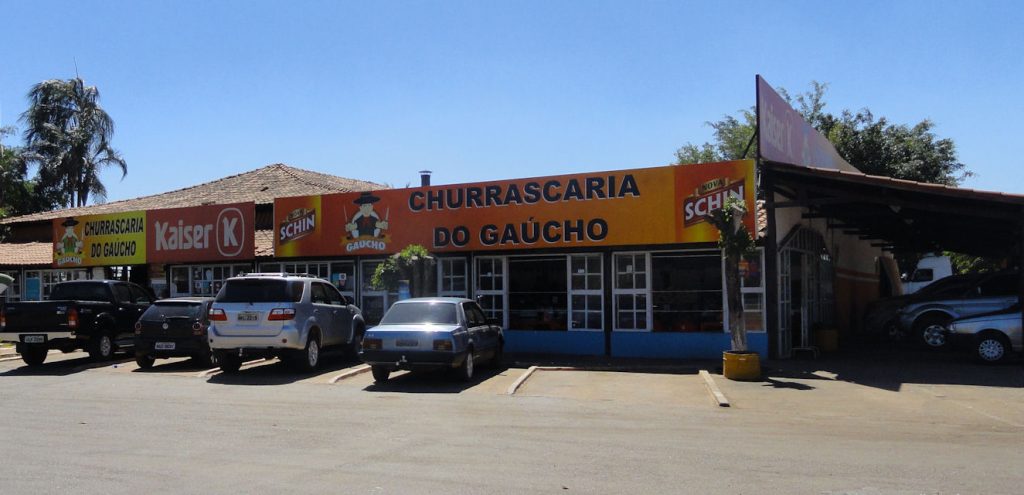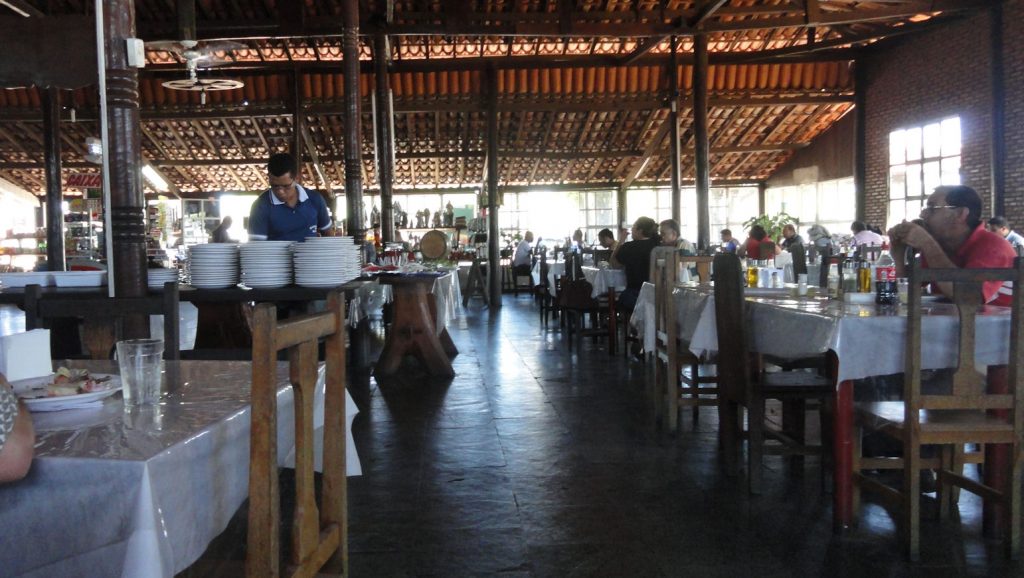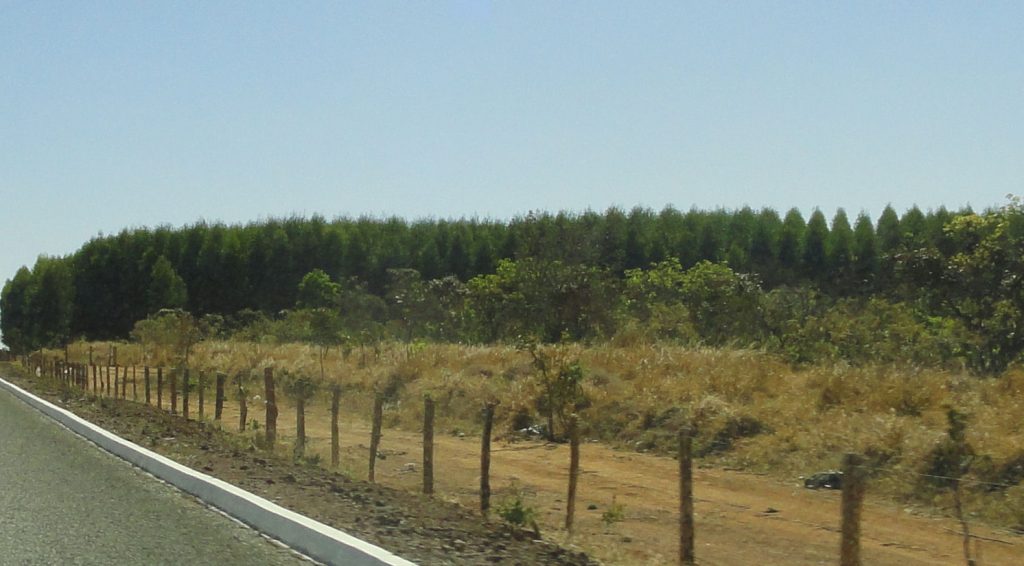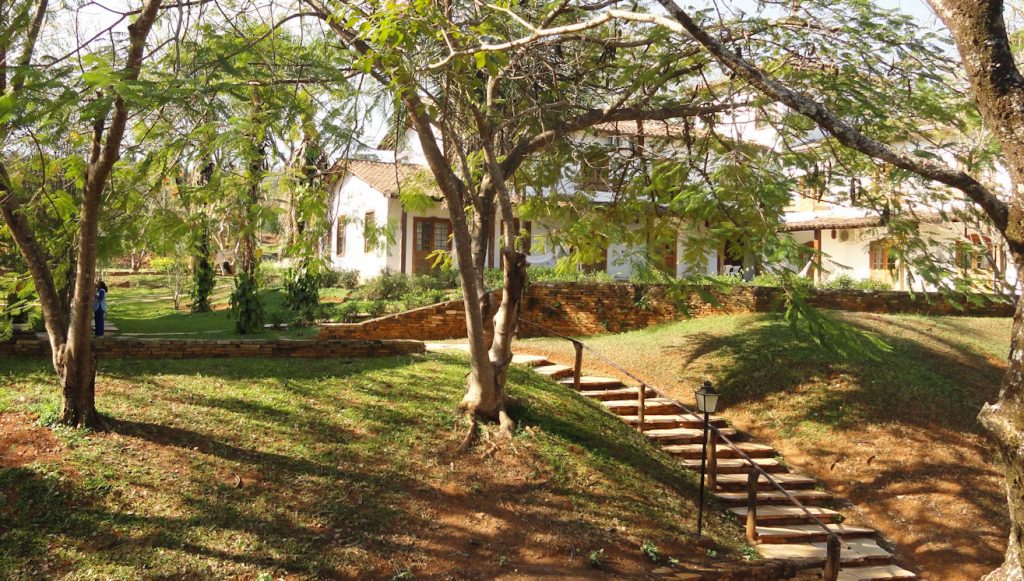
We had to rent a car, since mine still has not arrived. I had them pick up it up in the middle of May. It really doesn’t do any good to send it early, since they kind of save them up to send all at once. After it gets to the country, the Brazilian bureaucracy is daunting. I suspect they just delay so that there is no way the car will be in officially in the country for three years before you leave. That way you still cannot sell it tax free.

Anyway, rental cars are fairly expensive here and they only have stick shifts, so it is not a good thing. But we needed the car for Chrissy to travel. For her first visit we wanted to get around Brasilia and Goiás. You cannot do that w/o a car.

It is the end of the dry season around here. It will rain in a few weeks, but everything now is as dry as it will get. We saw lots of fires along the roads in Goiás. The news mentioned the extreme dryness and fire danger and the smoke irritated our eyes and throats.

The grassland/savannah burns naturally, but a combination of human-made fires and human fire suppression causes trouble. Many people here still see fire as an enemy to be fought or prevented rather than a natural process that needs to be used and managed.

I still want to study the ecology of the cerrado more. (FYI – the cerrado is the vast area of grass and widely spaced trees in the middle of Brazil, especially Goiás.) It is strange to me because of the very dry season and the very wet season. We have nothing really like it in the U.S. The predictably of the rain is making it a good agricultural region, but I didn’t see that much crop agriculture. It seems mostly pastures and there is significant forestry, especially eucalyptus. Eucalyptus grows very rapidly here; I have heard that the rotations can be as short as five or six years. And the Brazilians have developed varieties especially adapted to the specific demands of the region. The wood is used to make charcoal and for cellulose pulp.
Eucalyptus is unpopular with some people because not only is it an introduced species, but it also has been developed extensively both with conventional breeding and biotech. There are indeed drawbacks to extensive eucalyptus monoculture. They do not support large populations of wildlife. The leaves are not palatable to most animals and even bugs tend to shun them. It is no coincidence that the flavor is used for cough drops, but what is good for menthol in cough drops is usually not great for ordinary eating. The bark is loose and resinous. It tends to fall off and lay on the ground where it causes more intensive fires. The eucalyptus themselves can usually survive these conflagrations, but other native plants often cannot. Like everything else, you have to trade benefits for costs. As a tree farmer who grows loblolly pine, I see the eucalyptus as a competitor. It produces a substitute for man of the things that my pines also produce. Putting aside my self-interest, however, I can see that eucalyptus have a place in well-managed forestry systems, but as the Greeks used to say, “nothing too much.”
The eucalyptus plantations we saw were extremely orderly. The rows were neat and there was almost no undergrowth of competing vegetation. This is very much unlike pine in Virginia. I respect the ability to transform nature, but I prefer to leave a little on my own land for the animals and natural systems. Something too orderly is probably not so good for nature.
We followed BR 60 to Pirenópolis and BR 70 back home to Brasilia. These are good highways. There was a lot of traffic near Brasilia, but it was quiet once you got out of town. We stopped at a nice churrascaria on the road called Churrascaria Gaucho. It has gotten expensive in Brazil in all the big towns and in the tourist centers, but it is not bad in the smaller places. The total for the two of us was only $R44. They had lots of good cuts of meat and it came quickly and generously.
My pictures show the churrascaria I mentioned above. The middle picture is a very neat eucalyptus plantation and the two bottom pictures are the pousada where Chrissy & I stayed.
